30 October 2023
![]() 5 mins Read
5 mins Read
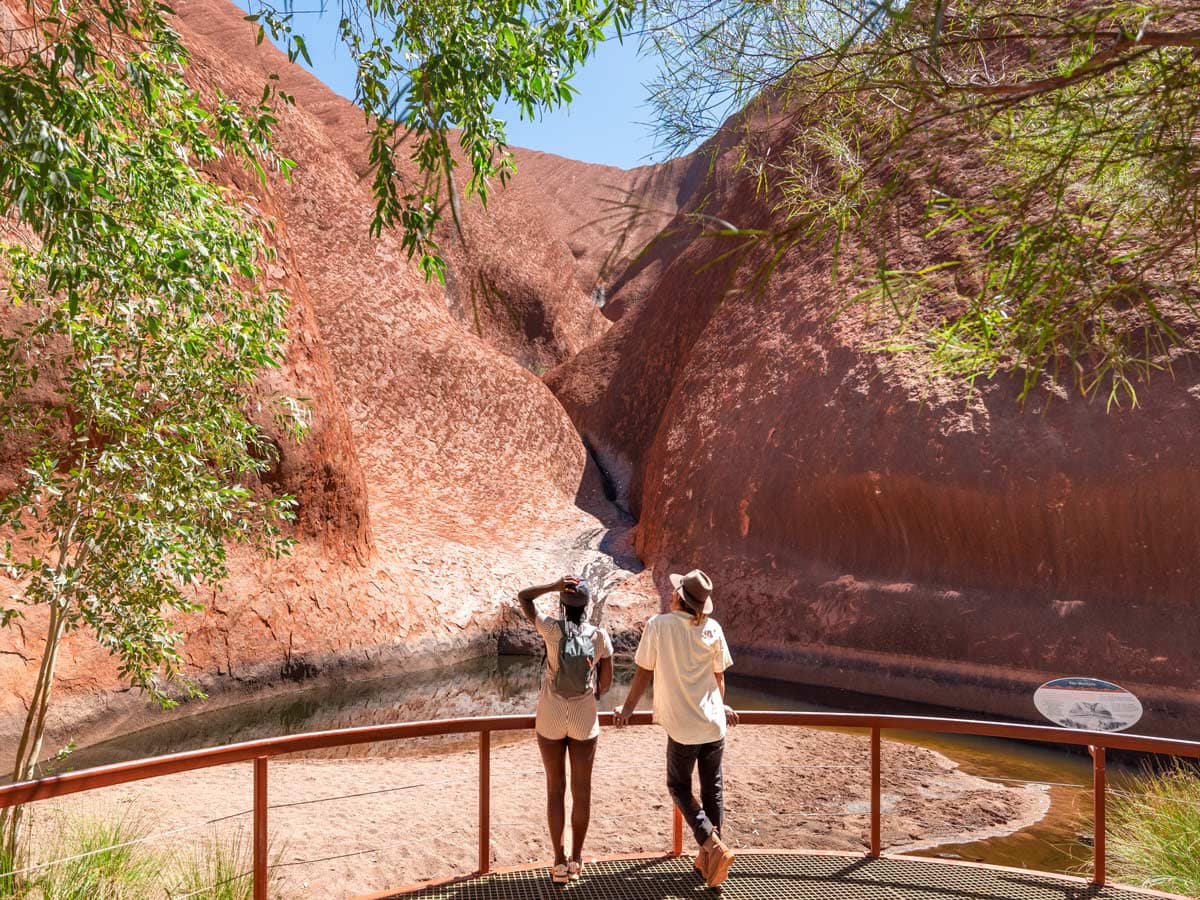
The local Anangu people have long been calling for visitors to stop climbing the sacred rock. And up until the ban, hundreds of thousands of tourists scaled Uluru every year, against the express wishes of the traditional owners, the Anangu people.
This played a part in the decision of the Uluru-Kata Tjuta National Park board to unanimously ban the climb – and we couldn’t be more pleased. But just why is it wrong to climb Uluru?
The traditional owners – the Anangu – consider Uluru an intensely spiritual place, an area where their Tjukurpa (creation stories), which govern their ceremonies, art and rules for living, converge.
The Rock is said to be spiritually significant because it was a traditional route of their ancestral Mala men. UNESCO has acknowledged this ‘cultural landscape’ by deeming it a World Heritage area so it’s hard to argue.
Would you climb over a church or wander through someone’s backyard without permission?
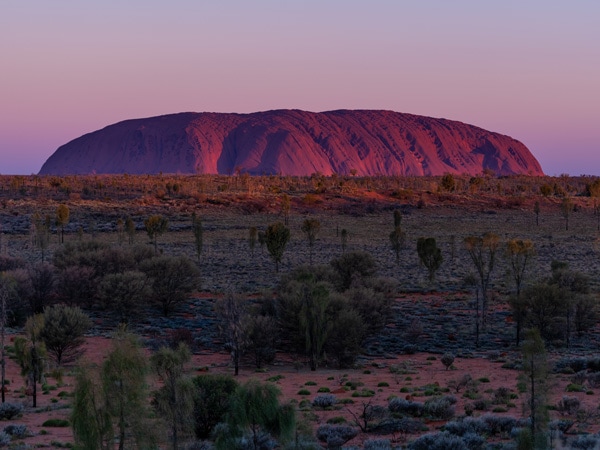
Uluru is not only a spectacular natural formation, but it’s also a deeply spiritual place. You can feel a powerful presence the moment you first set eyes on it. (Image: Tourism NT/Che Chorley)
The central Australian deserts and Uluru itself may seem outback tough, but the semi-arid ecosystem is actually quite fragile, as can be seen by the erosion along the historic climbing route, known as the Scar of Uluru. The wearing away of the sandstone is a very real issue.
Some have argued that we climb other iconic Australian sites, such as the Sydney Harbour Bridge: so why not Uluru? Putting aside the point that the bridge is not sacred, it is also not made of organic material, and is, therefore, a lot more hardy – unlike Uluru.
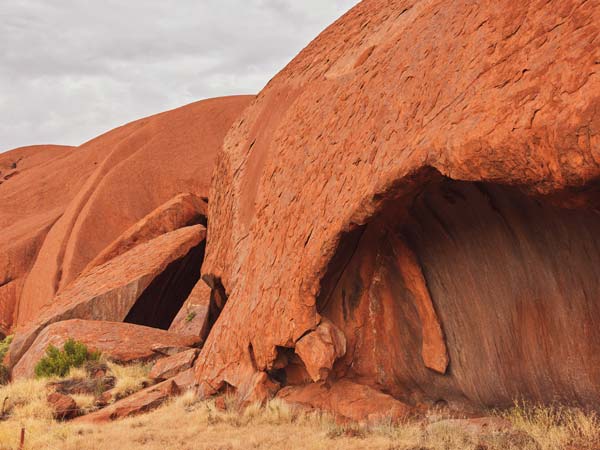
The surface of Uluru is very textured and surprisingly fragile. (Image: Tourism NT/ Tourism Australia)
As well as causing erosion, walkers caused a major issue when they had – well – nowhere to ‘go’. There are no toilet facilities on top of Uluru, so when nature inevitably calls the climbers used the sacred site as a loo.
And when the rains eventually came, that concentration of number ones and numbers twos flushed straight into the waterholes below, tainting the water that threatened flora and fauna rely on.
Adding to the levels of disrespect and pollution, climbers would frequently leave their rubbish behind too.
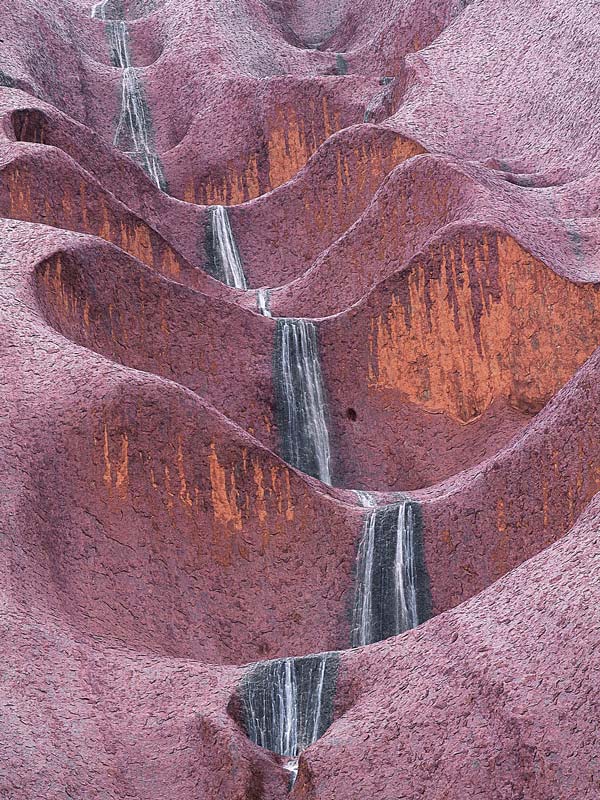
Rain on Uluru causes waterfalls and anything on top to run into the waterholes. (Image: Voyages Indigenous Tourism Australia)
Okay, so 348 metres might not seem high in terms of mountains (Kosciusko stands at 2228 metres, for example), but Uluru has reportedly claimed 38 lives in recorded history.
Unfit tourists often underestimated the task, and the chain along the climbing route was inadequate for the steep and sometimes slippery surface. The 95-storey climb was often closed due to wind, storms, and over the hot summer months (or temperatures above 36°C).
When a person dies on their traditional sites, it is also said to cause great sadness to the Anangu.
There are so many things to do at Uluru that don’t involve climbing it. You can cruise past it on a camel or on the back of a Harley-Davidson on motorcycle tours.
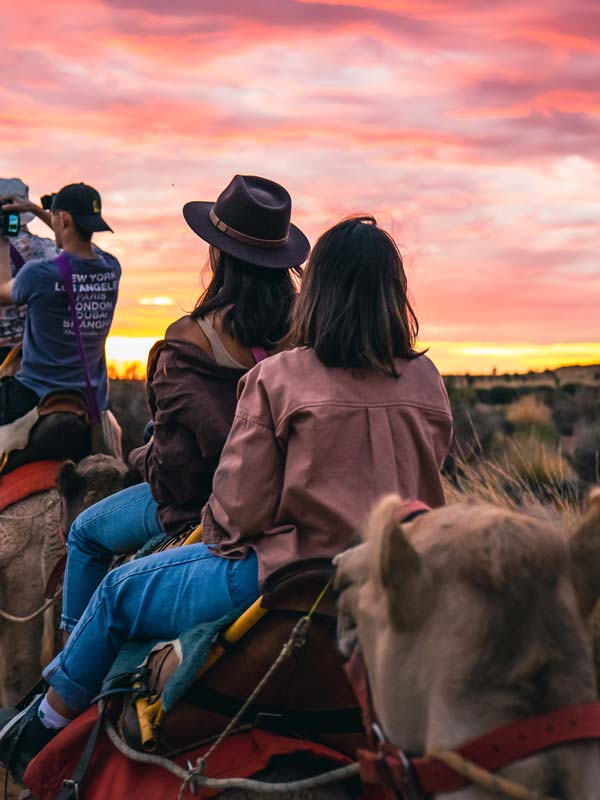
Cruise around Uluru atop a camel. (Image: Tourism NT/ Plenty of Dust)
You can enjoy it with champagne in hand or dine on a sand dune in its presence at the intimate Tali Wiru experience or the bigger crowds of the Sounds of Silence. You have to do at least one of these alfresco dining options on your first trip (try and time it with the waning crescent moon phase to have a spectacular star-watching session).
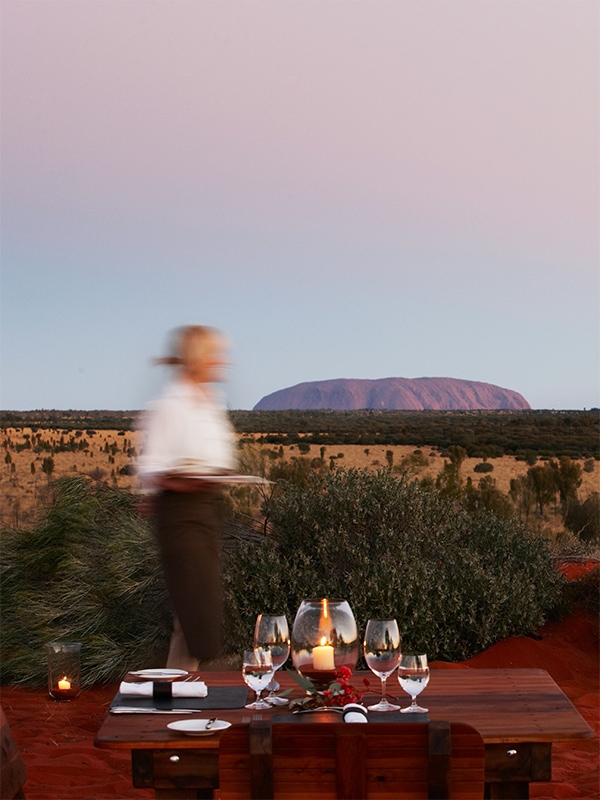
Take in a 360-degree view of the desert when you dine at Tali Wiru.
You can ride a bicycle around its base and there’s also a wide range of guided walks (for example, to Mutitjulu Waterhole) where you can see rock art up close with someone who can tell you the story of the land.
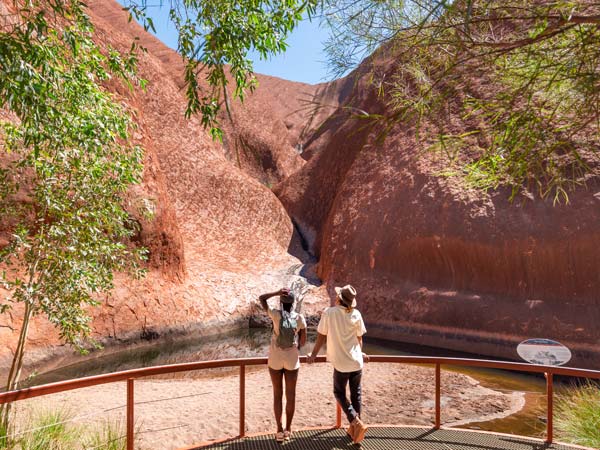
The Mutitjulu Waterhole at the base of Uluru is an awe-inspiring place. (Image: Tourism NT)
You can see it sunrise or sunset as the backdrop to the incredible Field of Light by Bruce Munro.
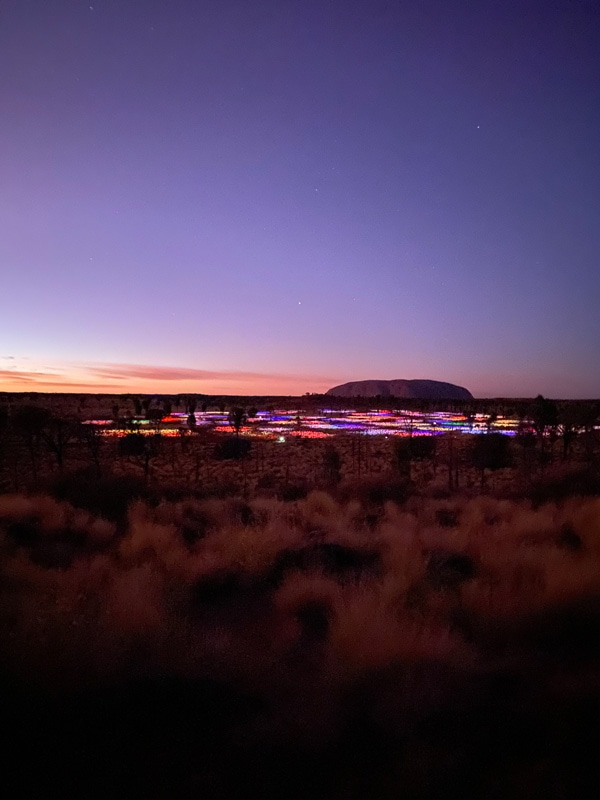
See Bruce Munro’s Field of Light on a tour with AAT Kings. (Image: Katie Carlin)
Heck, you can even skydive over Uluru if you’re looking for an adrenaline challenge.
Most importantly, you can choose activities that meaningfully engage in local Aboriginal culture. For example, you could visit the Gallery of Central Australia (GOCA) to see works by Anangu artists, visit the non-for-profit Walkatjara Art or book on to a tour with Maruku.

The Gallery of Central Australia exists to support the Indigenous artists of the Central Desert region of Australia. (Image: Voyages Indigenous Tourism Australia)
To really interact with this spiritual place in a meaningful way, and to learn all about the cultural significance of Uluru, join a ranger-guided Mala Walk, which leaves from the Mala car park each morning.
If you are planning to visit Uluru and want to know what else there is to do now you can no longer climb (and there are loads), check out our 3-day itinerary for Uluru or the unexpected things you can do at Uluru.
Put it simply, it’s a sacred place. For once show the aboriginal people well deserved respect for their beliefs. Help to heal.
I think Uluru SHOULD be Protected from tourists climbing all over it! Like they say, it is being abused and used as a toilet and contaminating the water supply. And doing so, is also a desecration to something so Precious. I am not religious!! I just Respect it for what it is, and I don’t like it being abused by people who think its “just a rock.” There’s more to it.
Still standing by what I said, below, I think the ONLY reason to climb Uluru would be under Invitation of an Aboriginal Elder and in the Company of a Geologist. The purpose would not be for the mindless “Oooh! What a Lovely View!!” reason, although the View IS a Bonus, it would be for a Geological look at the Monolith to examine its make up, and other things of Interrest that the general public don’t even know about. To hear from the Elders the Story of Uluru. There is obviously a LOT to take in, but not in the mindless tourist reasons. We must also keep in mind that it is a very Dangerous place to climb. Not only high, but slippery, and perhaps also crumbly.
I was lucky to have dinner with an elder in the mid 90s. He told me how he had landed on Uluru in a helicopter. He said the “real” traditional owners (the older men) had no problem with people climbing but to stay away from sacred areas. I quizzed him about and he was adamant. I’ll go with his opinion.
What a load of BS, I have photo’s of Aboriginal People on top of the Rock, Didn’t seem to bother them.
it is a pretty place and I think we should help it heal
i said for everone that want to heal uluru, stop walking on ULURU! it is spirtaul place it like climbing a church.
I took my kids there it was 40 odd degrees. They wondered why they couldn’t swim in the scared waterhole like the indigenous kids could. Try explaining that to impressionable innocent kids
We were lucky enough to do the champagne sunset then next morning we went alone to watch the sunrise, and yes, it was very emotional, and was as moving as any of the great cathedrals around the world we have visited. Please respect.
Yes keep people from climbing Uluru
Just so many nice walks around the base.
I spent some time there many years ago and enjoyed the sunrise and sunsets.
Respect it and the people whom are the traditional owners.
This is long overdue. Respecting the sacredness of Uluru can only enhance the experience. Giving respect to the history and value to indigenous peoples there is only right and the way forward. Walking on Uluru was not in keeping with the special reason it attracts so many visitors from near and far anyway.
It’s their rock, not ours.
It’s about time this should have been done many years ago. I have been there and chose not to climb instead took a guided tour around the rock much more interesting .
Well said
I completely agree with the ban of scaling Uluru. To my shame, I did climb it back in 1987, and was unaware of its significance to the Anungu people. It was an aboriginal elder at the information centre who alerted me to the sacredness of Uluru after I had climbed Uluru. I recall apologising and have told that story whenever the opportunity arises in conversation. I intend going to see Uluru again and taking the guided walk that I have been told is highly enlightening.
Hoorah! I climbed Uluru about 40 years ago and ever since I have sincerely regretted doing so. I am so glad that this is to be prohibited.
It’s about time they put a stop to climbing the Rock. I had to years ago as a Tour Guide so I could tell potential climbers what to expect but I never wanted to out of respect. Will ultimately save a few Japanese tourists that underestimate the climb in the heat because they don’t drink water like they should. There’s quite often stories of another helicopter rescue of a stranded or deceased Japanese tourist on the Rock. The base walk is spectacular especially after some rain so tourists should stick to this. Does this mean the Kata Tjuta walks could be banned as well? This is an excellent substitute and more exciting alternative to climbing the Rock and the Valley of the Winds walk will also stay in your memory for many years. Stunning!!!
In line with vast majority of responsible ecotourism and geotourism operators, I fully support the views expressed in this article. Sadly those few geological enthusiasts who are resisting the ban on climbing Uluru under the current arrangements are sadly out of touch with the views and aspirations of responsible tourism and overseas tourists generally. Whilst these people argue that earlier generations of the traditional owners supported the Rock climb, we must instead take account of the views of the current owners who after all are able to make a more unhindered decision not encumbered by the oppression that their ancestors endured from non-indigenous intersts in earlier years.
Personally I have no time for those uniformed domestic tourists who seem to think that they have every right to trample over the views and senstivities of traditional land owners.
In short, Park Management has taken a decision overwhelmingly in the best interests of both tradional owners and the upholding the reputation of responsible geotourism
I have the last few years wanted to visit Alice Springs, Uluru and The Olgas. Climbing Uluru was also one of my wishes, but after reading the 5 comments why not to, I really understand that it is a good desition not to climb it as it will not be possible after 26/10-2019.
I aggree with the ban my wife and I went years ago. Enjoy the view as the sun sets or walk around the base with a guide.
I visited Uluru in 98 didn’t climb the Rock out of respect would never be allowed in NZ. Great article.
I totally agree on the ban to stop tourist climbing Uluru should have closed years ago. I have friends that just back from there and they say there is plenty to do without climbing the rock.
Uluru is a magical place to our first nation people & has strong pull to all Australians who visit. Why can’t people respect it for what it is.
This was very enlighting and I will be looking forward to doing some interesting things at Uluru. Thank you.
The font looks good and lots of valuable information.